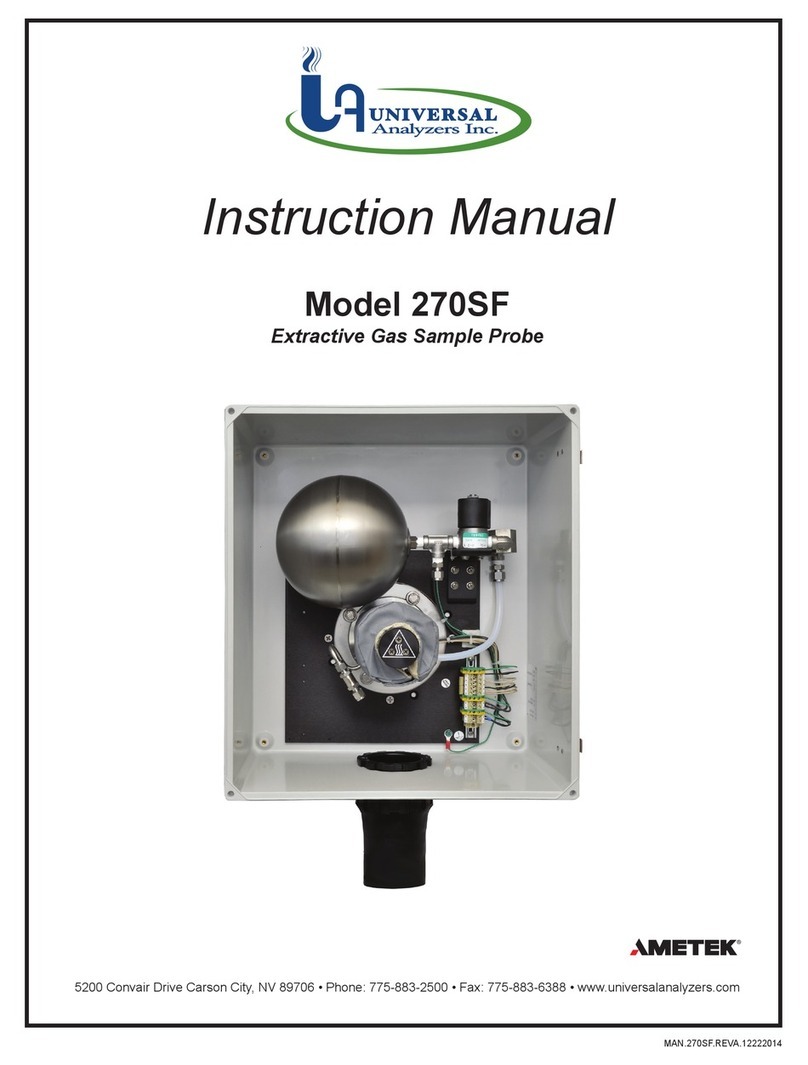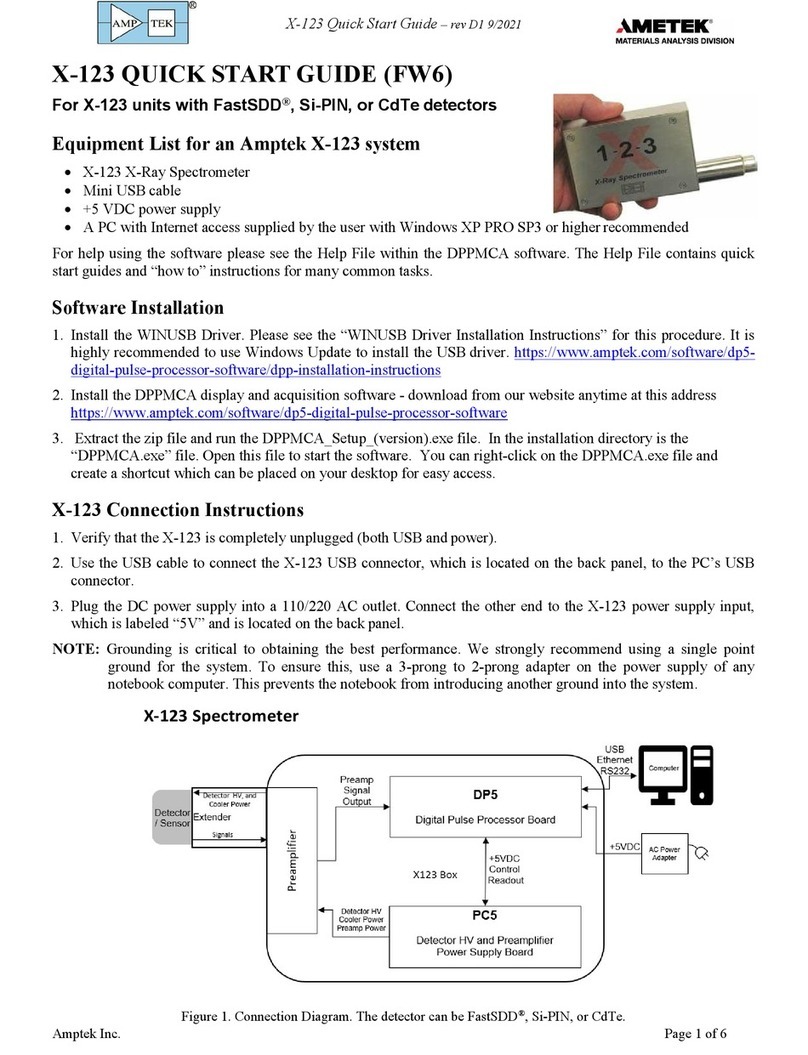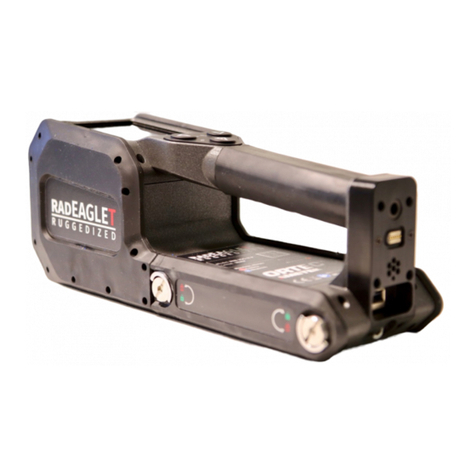
XR100CR SiPIN User Manual -B3
2 Description
2.1 Core detector technology
Amptek provides a family of high performance, compact X-ray
detectors and associated signal processing electronics. The radiation
detectors are custom photodiodes, including the traditional Si-PIN
diodes, Silicon Drift Detectors (SDDs), and CdTe Schottky diodes. The
detector is mounted on a two-stage thermoelectric cooler along with
the key preamplifier components. The cooler keeps the detector and
key components at -25oC or below, reducing electronic noise without
cryogenic liquid nitrogen and drawing <1W. This cooling permits high
performance in a compact, convenient package, and has been critical
to the development of portable XRF analyzers and of high
performance, benchtop XRF and EDS systems.
Amptek’s detectors represent the state-of-the-art in X-ray
spectroscopy, delivering the best energy resolution, best efficiency at
low energies, highest count rates, highest peak to background ratios,
all at low cost and suitable for portable systems, vacuum systems, etc.
They are used by OEMs and by laboratory researchers. The core enabling technologies include the
detectors themselves (which are designed and manufactured by Amptek), the low noise JFET and CMOS
technology, and the packaging which enables good cooling in a robust system.
The sketch above illustrates a detector mounted on a thermoelectric cooler, on a TO-8 header. The
input FET and other components are also mounted on the cooler. A nickel cover (also shown) is welded
to the TO-8 header with vacuum inside the enclosure for optimum cooling. In the cover is a window
(shown green above) to enable soft X-ray detection. This is typically beryllium for energies > 2 keV, with
Si3N4 available for lower energies. The entire assembly shown above is sometimes called the “detector”,
though strictly speaking it is the photodiode which detects the X-rays.
2.2 Preamplifiers and signal processors
The detector assembly shown above must be connected to a preamplifier (a circuit board containing
those portions of the preamp not in the TO-8). Amptek uses reset-style charge sensitive preamplifiers for
the lowest noise and highest count rates. Each type of Amptek detector (FAST SDD®, SDD, Si-PIN, and
CdTe) requires its own preamp circuit. These are available in several different standard package options:
as an XR-100 box, as a standard OEM preamp (PA210 or PA230) or in a custom board.
The output of the preamplifier must be connected to signal processing electronics (which includes
pulse shaping and a multichannel analyzer) and power supplies. Amptek has several different options for
these, including the X123 (where all are integrated in a single, small box), the DP5/PC5 board stack (bare
boards, for integrating into customer systems), and the PC5 module (usually used in the laboratory).
Please refer to Amptek’s website for more information.































